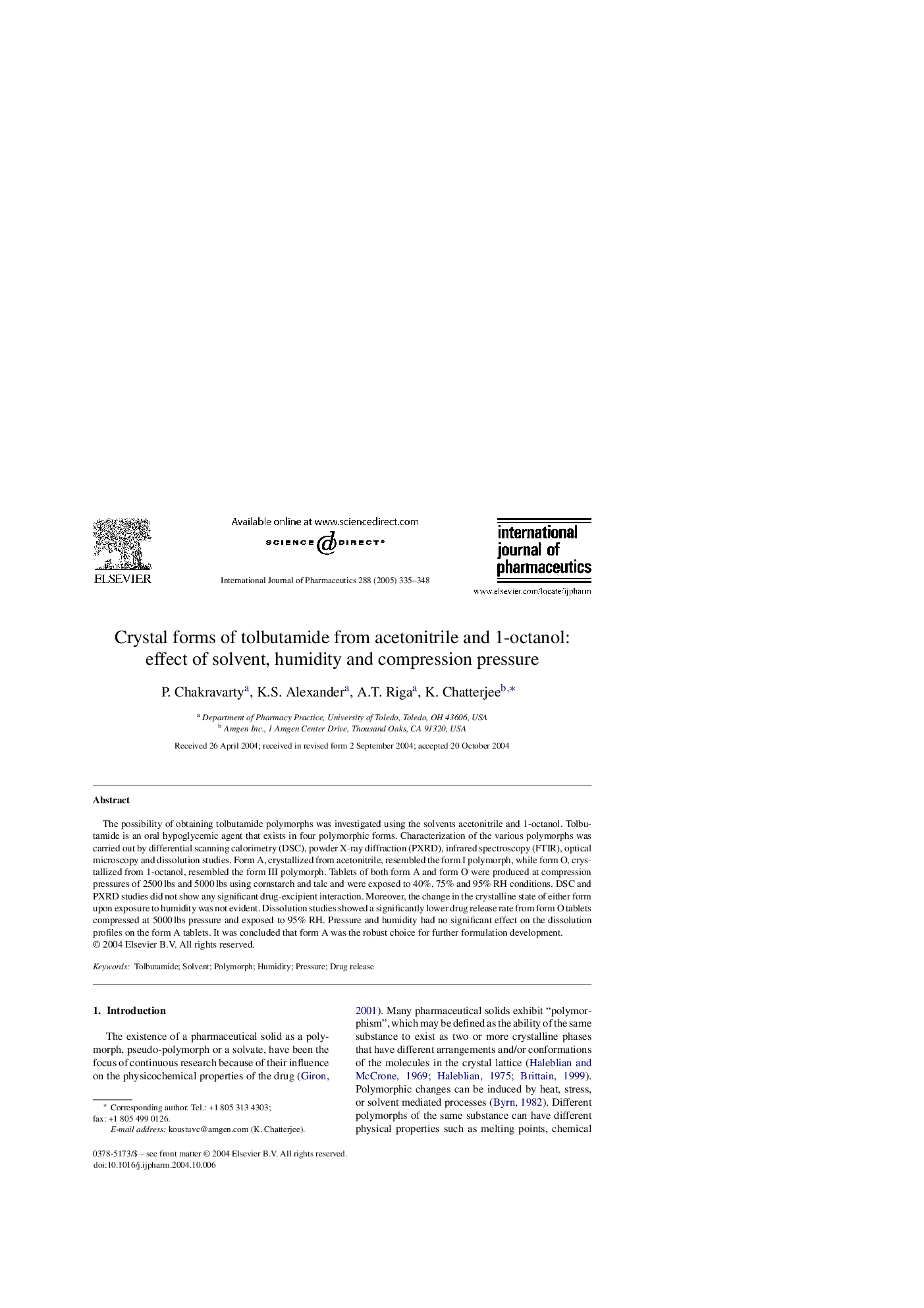| Article ID | Journal | Published Year | Pages | File Type |
|---|---|---|---|---|
| 9919003 | International Journal of Pharmaceutics | 2005 | 14 Pages |
Abstract
The possibility of obtaining tolbutamide polymorphs was investigated using the solvents acetonitrile and 1-octanol. Tolbutamide is an oral hypoglycemic agent that exists in four polymorphic forms. Characterization of the various polymorphs was carried out by differential scanning calorimetry (DSC), powder X-ray diffraction (PXRD), infrared spectroscopy (FTIR), optical microscopy and dissolution studies. Form A, crystallized from acetonitrile, resembled the form I polymorph, while form O, crystallized from 1-octanol, resembled the form III polymorph. Tablets of both form A and form O were produced at compression pressures of 2500Â lbs and 5000Â lbs using cornstarch and talc and were exposed to 40%, 75% and 95% RH conditions. DSC and PXRD studies did not show any significant drug-excipient interaction. Moreover, the change in the crystalline state of either form upon exposure to humidity was not evident. Dissolution studies showed a significantly lower drug release rate from form O tablets compressed at 5000Â lbs pressure and exposed to 95% RH. Pressure and humidity had no significant effect on the dissolution profiles on the form A tablets. It was concluded that form A was the robust choice for further formulation development.
Related Topics
Health Sciences
Pharmacology, Toxicology and Pharmaceutical Science
Pharmaceutical Science
Authors
P. Chakravarty, K.S. Alexander, A.T. Riga, K. Chatterjee,
